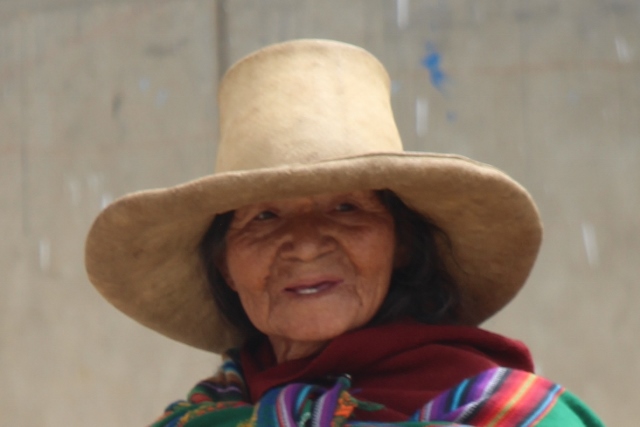I am not sure whether it is Cajamarca that disappoints, or whether we are just temporarily tired of traveling. Plenty of pictures, though, so there is enough to see and do.
We had high hopes for Cajamarca. Everybody we had met that had been here was very enthusiastic. There are lots of things to do, and the town itself is, reputedly, very charming. We even find ourselves a nice hotel in an old colonial house, with a courtyard.
And yet, we never warm to the town. Firstly, because it is actually not warm, at all, at 2600 m altitude, especially once the sun disappears. Which it does, frequently. But perhaps there is also a limit to the number of charming old colonial towns one can appreciate. After all, the Plaza de Armas is wonderful, including a fountain dating from 1692, the narrow cobbled streets and the old adobe houses are lovely, and the balconies, but they are not that different from the earlier charming old colonial towns we have seen. The churches are nice, from the outside, but actually mostly much newer than the colonial era, and not so impressive on the inside. But when even the market area cannot fascinate me anymore – except for the many Celendin hats, that also populate large parts of Cajamarca -, I realise that it is just travel fatigue that hits us.
We do visit some of the sites around town. Of course we need to go to the Banos del Inca, the place where, allegedly, the vast Inca army of Atahualpa was assembled, which subsequently proved powerless when the opportunistic band of Spaniards of Pizzaro captured Atahualpa in 1532. We dutifully spend half an hour in the thermal waters, in a private cabin. We go to the Cuarto de Rescate (the Ransom Room), where Atahualpa was kept prisoner, and where he promised to fill the room to as high as he reached, with gold and silver objects, as ransom for his freedom (which he did, and then got executed anyhow). Not much to see, except for a perfectly built small Inca structure. And we enter a few churches, the cathedral and the Complejo de Belen, which included one of the earliest hospitals in town, run by the nuns.
Outside town, we get to the Ventanillias the Otuzco, another burial place, where the dead were put in purpose-dug niches in the rock face. A total of 337 niches have been identified – not by me -, not all equally deep, or even deep enough to put anything in, and in any case, any treasures or bodies inside have been vandalised by the customary grave robbers long ago. The fact that it doesn’t stop raining, doesn’t help with the appreciation of this pre-Inca site.
One morning we decide to see some alternative sights, no more churches and ruins, but rock paintings and a waterfall. The rock paintings of Callacpuma, according to the sign boards of the Ministry of Culture, are the oldest in the Americas, 5000 years old, and there are over 4000 of them, in a 3 km area. Unfortunately, the spot that is being promoted by the same Ministry involves a steep climb to a rockface with just a few, barely visible, red paintings, some covered by later graffiti. Asked about the other paintings, higher up, the guard at the site says that he doesn’t know, because those are not under the responsibility of the Ministry. Of course not! We don’t manage to find anybody else who can show us the paintings, and to just go and wander off into the mountains didn’t seem such a good idea. Better to go and see the waterfall, in the village of Llacanote. But noting the little stream coming from where the waterfall is, I realise that this, too, is going to be disappointing. And indeed, it is.
Perhaps we just need a holiday. (otherwise, click through directly to Trujillo)













































